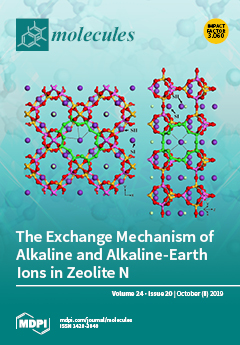Many essential oils (EOs) regulate the quorum-sensing (QS) system of pathogens and inhibit the virulence expression. Interference with QS can potentially reduce bacterial multidrug resistance and aid the biological control of bacterial disease. In the present work, the antibacterial and anti-QS activities of
Cinnamomum camphora leaf EO were investigated. A total of 23 chemical components with relative levels ≥0.11%, including a large number of terpene compounds, were identified in
C. camphora leaf EO by gas chromatography–mass spectrometry (GC-MS). The principal component was linalool, followed by eucalyptol, with relative levels of 51.57% and 22.07%, respectively. The minimum inhibitory concentration (MIC) and antibacterial activity of
C. camphora EO were examined, and
P. aeruginosa and
E. coli ATCC25922 showed the highest and lowest sensitivity to
C. camphora EO, respectively. Tests of QS inhibitory activity revealed that
C. camphora EO significantly decreased the production of violacein and biofilm biomass in
C. violaceum, with the maximum inhibition rates of 63% and 77.64%, respectively, and inhibited the biofilm formation and swarming movement, independent of affecting the growth of
C. violaceum. Addition of
C. camphora EO also resulted in downregulation of the expression of the acyl-homoserine lactones (AHL) synthesis gene (
cviI) and transcription regulator (
cviR), and inhibited the expression of QS-regulated virulence genes, including
vioA,
vioB, vioC,
vioD,
vioE,
lasA,
lasB,
pilE3, and
hmsHNFR. Collectively, the prominent antibacterial activity and anti-QS activities clearly support that
C. camphora EO acts as a potential antibacterial agent and QS inhibitor in the prevention of bacterial contamination.
Full article






